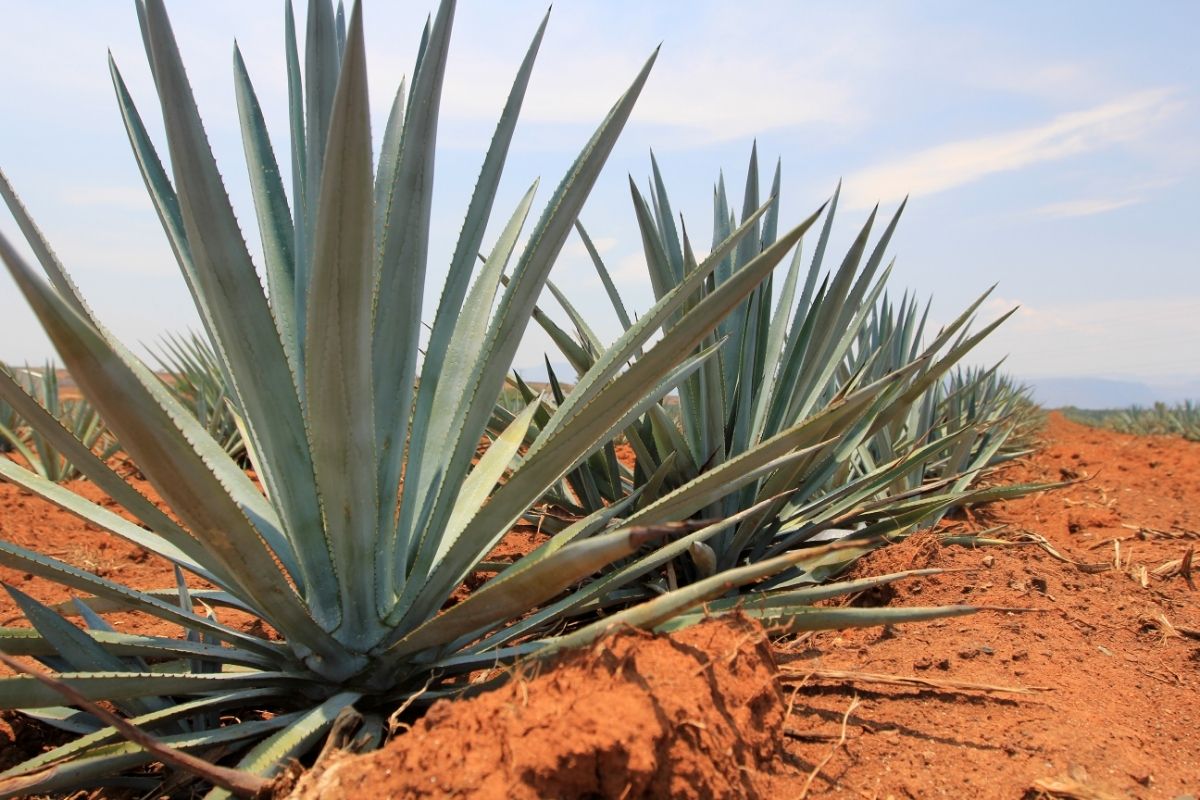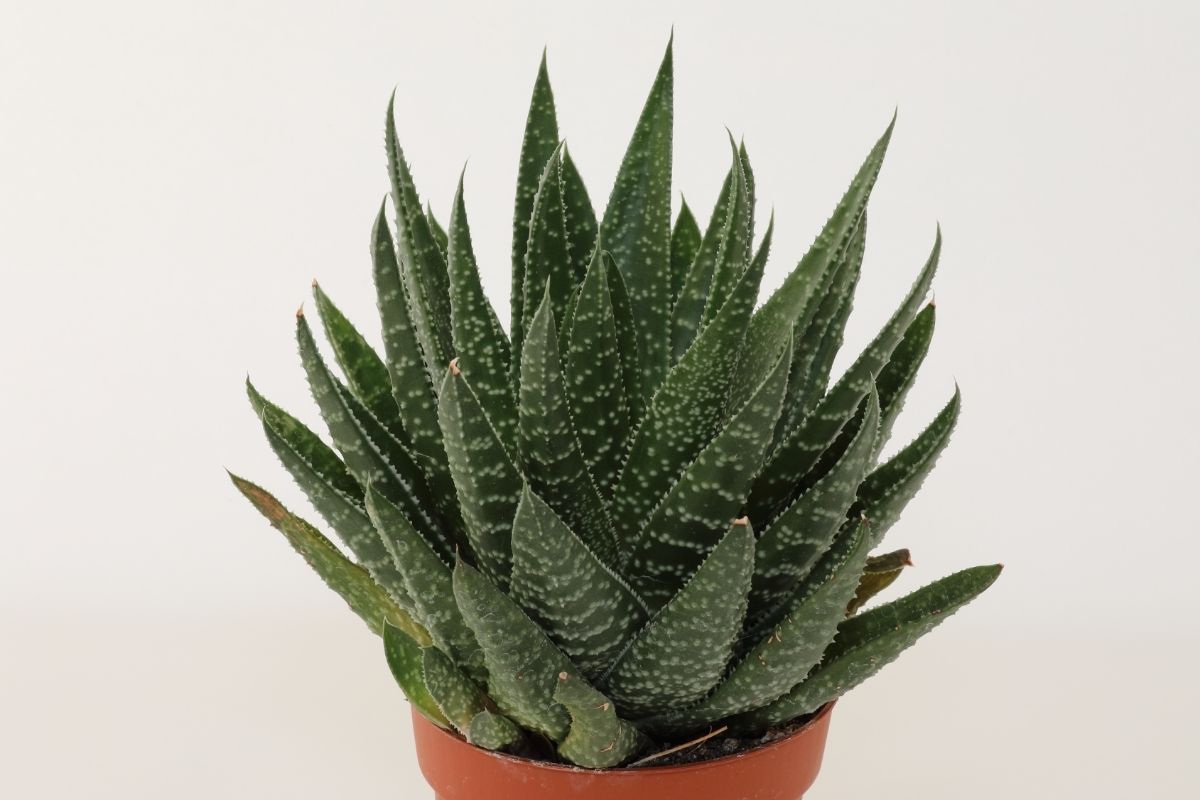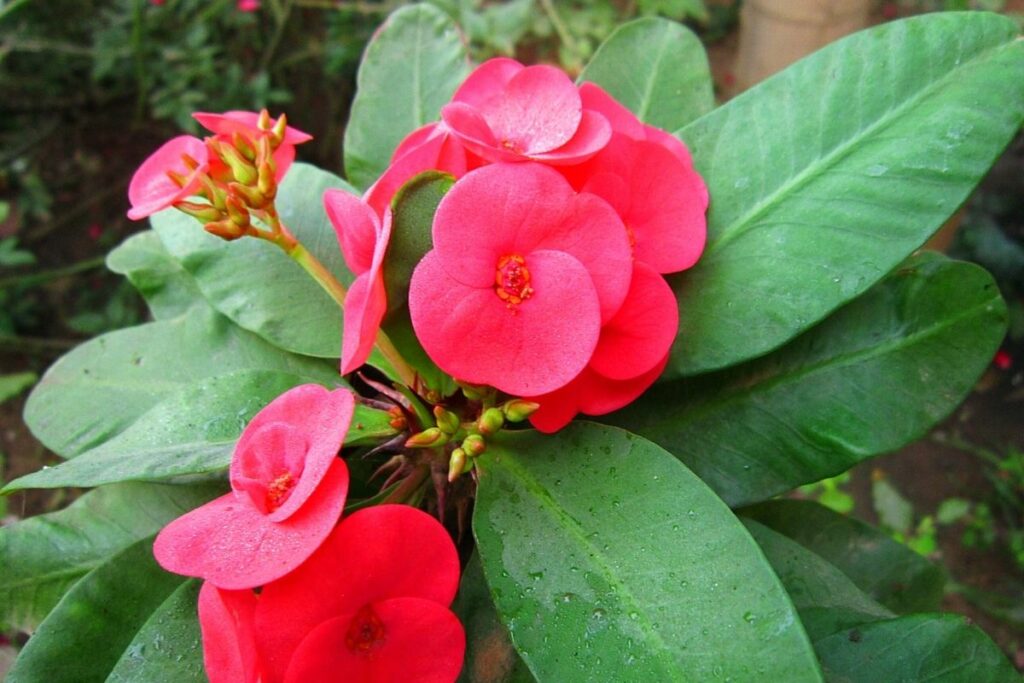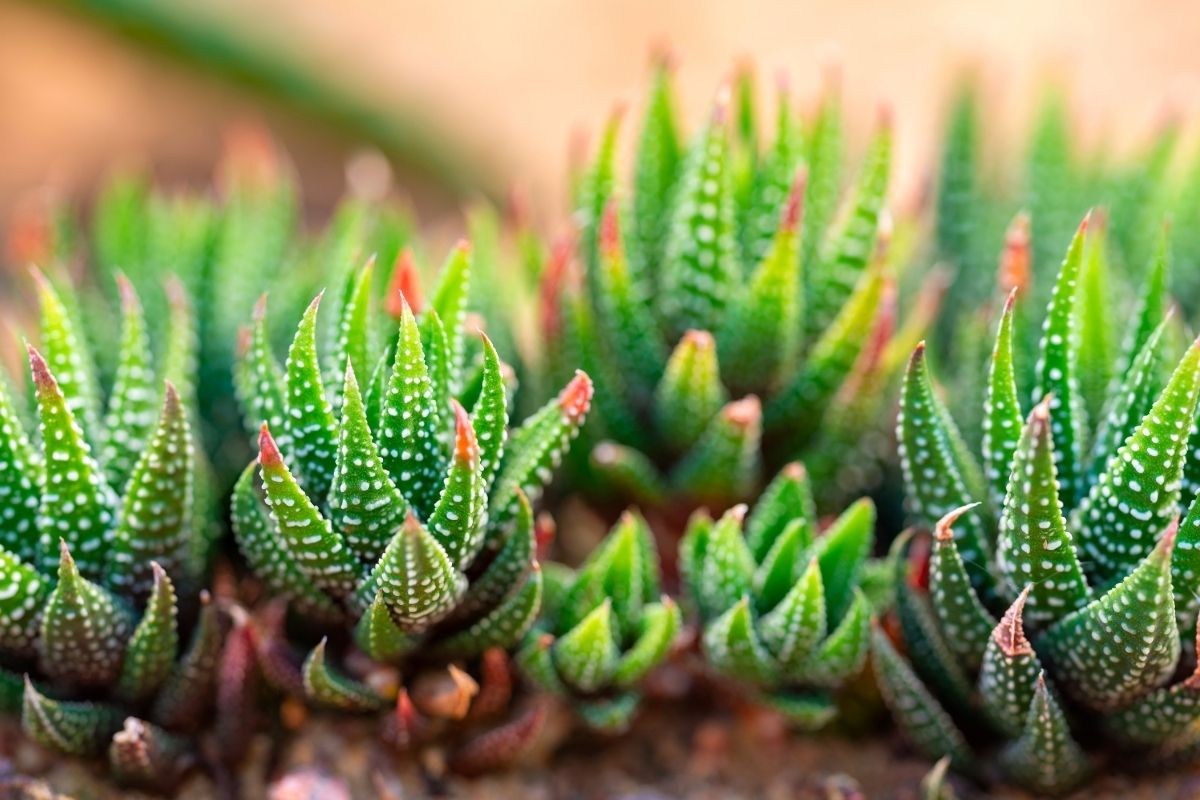Succulents are very popular plants for more than one reason. They are not only attractive and cute, but they are super easy to take care of. Keep reading and let’s talk about how often you should water your succulents.

Most people who have them in their home or office grow them as houseplants because it is so much easier than taking care of a full-grown plant.
These plants are perfect for taking up a little space on your window sill, and light up the room. Although many succulents are small, they do pack a punch and are frequently a favorite.
There is one question that confuses a lot of people, though – how regularly are you supposed to water them? When it comes to succulents, there are a few myths that a lot of people believe.
These myths may seem harmless, but they aren’t to your plant. So, if you are unsure of how often you should be watering your succulent and want to learn a little more about some of these myths, keep reading!
What Are Succulents?
Let’s start with the basics – what are succulents? Succulents are plants that are generally defined by their ability to store moisture within their leaves.
That means that when there isn’t enough rain, or when the air dries out too quickly, the succulent will absorb this excess moisture from its leaf structure. This way, it doesn’t wilt or die.
And since these plants don’t require a large amount of soil, they tend to like to sit at eye level. When grown inside, they can be placed on shelves or windowsills where you can easily see them.
The term succulents include plants like cacti, agaves, aloes, and euphorbias. While some plants fall into the category of just “succulents”, others have their own special places in the world of succulents.
“Cactus” is an umbrella term that describes a variety of different types of plants, including those found in deserts, tropical areas and even indoors.
There are also varieties called “cascades” which are made up entirely of cascading branches rather than roots (they are usually covered in fine hair).
RELATED: Realize Common Fungal Infections on Succulents and How to Treat Them
Popular Indoor Succulents
There are lots of popular indoor species of succulents. These species include little cacti, such as the Pekingese Dog Cactus, the Aloe vera, the Christmas Cactus, and the Snowflake Cactus.
Some other favorites include snake plants, sedum and the semi-succulent coleus. Popular cascade succulents include wax ivy, donkey’s tail, string of beads, string of turtles, and the peanut cactus.
Potting Succulents
When growing succulents outside, there are a couple different types of containers that they will thrive in. The first type is soil pots. While this method is great, as long as the container is big enough.
Because of this, soil is typically recommended. If you want to use potting mix instead, make sure that you buy certified organic soil.
Otherwise, there might be pesticides used that could harm your succulents in the future.
If you have succulents indoors, they should be potted in soil that drains well. Since they retain water in their leaves, they do not need frequent watering like many other plants do.
The same rules apply with using organic soil, as there may be harmful chemicals and pesticides in it, but they are otherwise easy to care for.
Why Succulents Do Not Require A Lot Of Water
Succulents don’t need to be watered frequently because they absorb water and store it in their leaves. Generally speaking, a succulent should only be watered around once a week.
However, if the top third of the soil feels dry, then it is okay to water them again. You should always allow time between watering so that the soil can dry out, and the plant can absorb the water.
While it might be okay to occasionally mist young succulents, mature ones should not be misted.
Because of their natural habitat, which is comprised or arid conditions, these plants so well in dry environments.
If you are misting the plant, you are changing the surrounding humidity. This will have a negative impact on the health of the plant, and you can harm it.
How Often You Should Water Succulents
There are many types of succulents. Below are some common succulent types and what conditions they do well in. If you have any of these plants, check to see how you should be taking care of them.
Crassulaceae Family
The crassulaceae family is a large family of plants that includes echeveria, sedum, crassula, sempervivum, kalanchoe, aeonium and sedum.
These plants all store water and do not require a frequent or heavy watering. While these plants are very easy to take care of, they are usually slow growers.
They are hardy plants, but do not do well in cold temperatures. You need to ensure that these plants get enough sunlight, so places like window sills are good fits, as long as there are no cold drafts.
Cacti

The cacti family includes plants such as the cholla, saguaro, prickly pear, etc. They all store water in their spines, and thus do not require regular watering.
These plants stay relatively small, but there are very large species in the wild. These plants should generally should only be watered when the soil feels completely dry.
If you are misting the plants, the water will soak into the porous material of the stems. This might cause mold to grow, especially during wetter periods.
RELATED: Pests in Succulents How to Get Rid of Them for Good!
Aloe

The aloe family includes plants such as aloe vera and aloe arborescens. These plants tend to get larger than other succulents, and often do best in warm temperatures.
As with most succulents, these plants do not need to be watered regularly. In fact, when they are grown outdoors, they can get quite large.
When they start to show signs of age, however, you might consider giving them more water.
Agaves

The agave family includes plants such as Yucca, Echeveria, and Agave. All of them store water in their blades, and thus do not need regular watering.
Agaves are very popular plants, and they come in varieties ranging from short to tall. There are even miniature versions called mini-agaves.
Most of these plants can grow anywhere, but there are some specific conditions such as shade where the plants should be placed.
Gasteria

The gasteria family includes plants such as Gasteria scabra, Gasteria leptostachya, and Gasteria acinosa. Like agaves, they also store water in their spindle, so do not need regular watering outside.
It is important to let this type of succulent sit in the sun for at least six hours each day, otherwise they may not grow properly.
Some other tips include adding lime to the potting medium, pruning off dead branches, and maintaining high humidity levels.
Euphorbia

The euphorbia family includes plants such as the crown of thorns, African milk plant, and Euphorbia Ingens. These plants store water in their leaves, although sometimes the roots also play a role.
Depending on the species, you might want to give these plants a weekly dose of liquid fertilizer. But keep an eye out for possible pests such as aphids.
If you notice anything, try spraying the plant with insecticidal soap to get rid of the problem before it gets worse.
Unfortunately, these plants are toxic due to the milky sap they produce, which can irritate skin and eyes.
Haworthia

The Haworthia family includes plants such as the Haworthia Cymbiformis, Limifolia, and Attenuata. These plants thrive in hot temperatures, and can handle low light levels.
They typically have thin green leaves. Their flowers are white or cream colored, and they bloom throughout the year.
You might think of them as succulents because they look similar to those found in desert areas.
But unlike other types of succulents, they do not store water. Instead, they draw moisture from the air through tiny pores that cover the surface of their leaves.
Due to this feature, they require little maintenance. However, if you notice any discoloration around the area where the air enters the leaves, cut away the affected portion.
RELATED: Find Out How to Choose the Right Succulent Pot (Easy Guide with Tips)
Frequently Asked Questions
What Is The Best Time To Water Succulents?
It is best to water succulents in the early morning, especially during the summer. This is because you should avoid watering when the temperatures are at their highest.
If you leave water on top of the plant, it could heat up and end up burning the plant and causing damage.
How Often Should You Water Succulents?
Generally speaking, succulents should only be watered once a week, if that. You will have to water them less frequently in the winter, though.
Are Succulents Easy To Look After?
Yes, succulents are very easy to take care of. Succulents are some of the easiest plants to care for because they require little attention and water.
These plants do especially well in warmer climates, though they can usually withstand mildly chilly temperatures, too.
Final Thoughts On Watering Succulents
Succulents are very easy to take care of. In general, all of these plants would rather be under watered or not watered at all than be overwatered.
Because of this, it is important to know if the soil they are in is dry or not. To test this, simply stick your finger in the soil and check. If the top third or more is dry, then it is okay to water your succulent.
If it is still damp, however, you should wait a few days before watering. You will do more damage overwatering than you would under watering.
Editor’s Recommendations
Do Succulents Attract Bugs? Plus Best Home Remedies on How to Prevent Them?
Do Succulents Attract Flies? Plus, How to Knock Them Off on Succulents?
Do Succulents Attract Spiders? Yes, They Do! Let’s Learn How to Keep Them Away?







